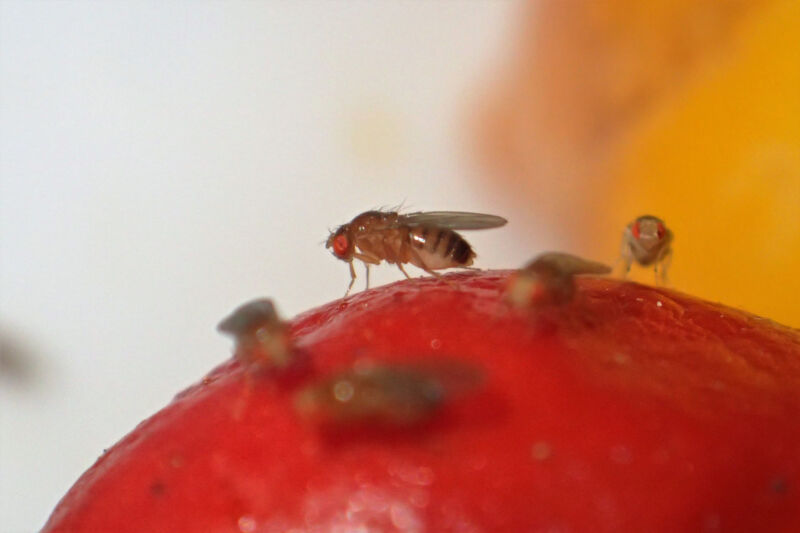When we think of evolution, we often think of slow, gradual changes made over millions of years. However, new research suggests that the process could be happening quite quickly, driving major changes over the course of a single year in response to seasonal changes.
The paper describing that research was released last week and studies evolution in fruit flies over around 10 generations, with each generation of flies spanning less than a dozen days. While fruit flies are notoriously short-lived, and the distance between their generations is tiny, evolution could be happening quicker than previously anticipated even in longer-lived organisms, according to Seth Rudman, assistant professor in the school of biological sciences at Washington State University and one of the authors of the paper.
"Over the last few decades there has been a growing appreciation that evolution can occur fairly rapidly," he told Ars.
I just wanna fly
For the new study, the research team released 1,000 fruit flies into 10 outdoor enclosures. The enclosures were finely netted, and each had its own small tree to help recreate a habitat similar to the wild. Over the course of four months, the researchers let the flies hang out in the enclosures, and each group of flies was fed the same diet. The set of enclosures "allows you to track multiple populations that are all evolving in response to the same abiotic and, largely also, biotic factors over time."
Throughout the course of the experiment, there were roughly 10 generations of the flies, and the populations expanded rapidly. At its peak, the experiment saw a maximum of 100,000 flies in a single enclosure.
The team periodically checked on the flies to get a sense of how their genes and traits were changing. The researchers identified various characteristics, such as reproductive success and heat or cold resistance. To ensure that these altered characteristics were due to genetic changes, the researchers removed 2,500 eggs from each enclosure and raised the new populations separately for three generations before testing to ensure the changes persisted.
At each check-in, the team also randomly selected 100 flies from each enclosure and sequenced their entire genomes. Since the DNA of all 100 flies was mixed before sequencing, this gave a picture of the average fly's base changes. But it may have missed some less common differences.
Live fast, die young
Over the four months, the researchers saw changes in the frequency of some variants across 60 percent of the flies' genomes. That's a particularly large change that Rudman called a "staggering number." Only a small fraction of this represents variants that were selected for by the changing conditions as summer shifted to fall, however. As those variants were selected for, they pulled along nearby areas of the chromosome, altering the frequency of neighboring variants as well.
The researchers could tell the changes were adaptive rather than just genetic drift. They could tell because the changes appeared in the populations of most enclosures rather than just one or two.
According to Rudman, the speed of all these changes was unexpected and showed that the flies had evolved and adapted to their environment faster than anyone had previously measured—along the timeline of ecological changes in the enclosures.
Rudman noted that, though the fruit flies have short lives and breed quickly, evolution and adaptation might happen across generations faster than originally thought in other species as well. However, he added that evolution is much harder to study it in creatures that live more than a few days. But, "Evolution can occur really, really rapidly," Rudman said.
Science, 2022. DOI: 10.1126/science.abj7484 (About DOIs)



3175x175(CURRENT).thumb.jpg.b05acc060982b36f5891ba728e6d953c.jpg)

Recommended Comments
There are no comments to display.
Join the conversation
You can post now and register later. If you have an account, sign in now to post with your account.
Note: Your post will require moderator approval before it will be visible.